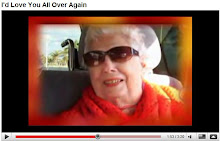Stolen Lives
by AARP Magazine Feb 2008
Thousands of older Americans are being robbed of their freedom, dignity, and life savings by a legal system created for their protection. How can this happen?
The Christmas Day before the courts stripped Inez America Carr of her independence, she woke up earlier than usual to help prepare the traditional family feast. She started first on the rolls, dozens of them, mixing the homemade batter and allowing the miniature loaves to rise, then bake, before stacking them on sheets of wax paper. She washed the collards, set them to boil in an aluminum pot with a chunk of salt pork for flavoring, then peeled the fat sweet potatoes and dressed them with liberal amounts of butter, sugar, and nutmeg. By evening, her three-story home in San Francisco's upscale Pacific Heights was thick with the savory smells of the cooking of her Mississippi roots.
It was a typical Christmas for the Carrs. Inez, a retired practical nurse, and her husband, Carnell, a retired psychiatric technician, never had children of their own, but they never lacked invitations to holiday dinners. Over more than a half-century, the Carrs had grown kin-close to a family named the Jolivets, whose matriarch, Joanne Gentry, worked alongside Inez at the old Franklin Hospital in the Duboce Triangle in the 1950s and '60s. After Gentry's death, two younger generations of Jolivets adopted the Carrs as their own. They've shopped for the couple, shuttled them to doctor appointments, and helped with repairs to their Victorian home. "They are my family," Inez says. "They look out for us."
On that peaceful Christmas Day 2001, the assembled family had no idea of the drama that was about to unfold: Just three months later, a visit from two out-of-town relatives would set in motion a series of events that would land the Carrs in front of a San Francisco judge. He would decide the couple were incompetent to handle their own affairs, and place them—ostensibly for their own well-being—under the care of professional conservators. These total strangers would assume control of the Carrs' finances, placing them on a restrictive monthly allowance.
They would redirect their mail and try to replace Carnell's doctor—all the while billing the Carrs $90 an hour for their services. Eventually, legal and conservator fees would drain much of the couple's life savings. The court would even bar Inez from hiring her own lawyer.
Inez America Carr grew up with the rural Southern values of self-reliance and autonomy, and the sudden loss of independence—and the ensuing struggle to win it back—has left her a perplexed and angry 93-year-old.
What happened doesn't square with her vision of the country that gave her both a middle name and a lifetime of opportunity. "How in the world can they do this to me under the clear blue sky, under the guise that they're protecting me?" she asks.
The answer: It happens every day across the country to unsuspecting people just like Inez, because of a patchwork of state laws designed to care for adults who can't take care of themselves—incapacitated adults. Often the system works. But too often it backfires, leaving its victims worse off than they might have been without the system's so-called protections.
That system is known in most states as "guardianship." California calls it "conservatorship." Some places use both terms to mean slightly different things. But the upshot is the same: In every state, a judge has the right to decide that someone is no longer capable of running his or her own life. The judge can then appoint a guardian to make all major decisions for the ward (the term used to describe a person placed under guardianship).
The guardianship system, which was brought over from England during colonial times, is now considered a necessary part of elder law, to be used under narrow circumstances and only as a last resort. Without such a process, there might not be anyone to make health care decisions for, say, a person suffering from dementia who has no caregiver. But while many guardianship cases go off without a hitch, the system is also rife with opportunities for financial exploitation, medical neglect, and the wrongful usurping of a competent person's freedom.
"Guardianship is a godsend and a gulag," says Erica Wood, associate staff director of the American Bar Association's Commission on Law and Aging. "It's a lifesaver and a life stopper. It's an institution that we as a society need. But we need to make it better."
“You could be a shoe salesman at a five-and-dime store yesterday and a professional conservator or guardian today.”
The perils of guardianship first gained public notice in 1987, when a platoon of Associated Press reporters fanned out across the United States, reviewing 2,200 case files for a six-part investigative series. The reporters uncovered "a dangerously burdened and troubled system" in which judges were committing people to guardianships without first permitting them access to attorneys or even hearings. They also discovered that "often, in the eyes of the court, being old and spending money foolishly" were criteria enough to warrant being placed in a guardianship. What's more, there were few safeguards to ensure that guardians didn't abuse or steal from their charges.
Conservators and guardians continue to siphon five- and six-figure sums from the bank accounts of the very people they are supposed to be protecting. Sometimes that siphoning is pure theft; other times guardians simply charge astronomical fees for their services.
New York's Daily News reported about guardians who billed their clients' estates $300 an hour for such routine services as reviewing bank accounts or paying bills . One guardian reportedly visited a client who was celebrating her birthday, then billed her $850 for the social call. In many cases, the client not only has to pay the guardian for his or her services, but also must pay the guardian's attorney for time spent on the case.
Adding to the potential for abuse is the fact that there is no uniformity in records states must keep. Consequently, no one knows exactly how widespread the problems are. Many experts consider abuse rampant. Bob Aldridge, a Boise, Idaho, elder-law attorney who testified recently on the issue before Congress, reviewed 250 guardianships on behalf of the state bar association and Idaho court system, uncovering more than 50 with "egregious" problems. "These are not isolated,
occasional blips," he says. "This constitutes a significant portion of the cases out there. They were flat-out rip-off situations."
Over the years, the Carrs have accumulated their share of medical problems. Carnell has dementia and heart disease. Inez suffers from high blood pressure and diabetes. Twice a day she measures her blood sugar, keeping meticulous records of her levels. With the Jolivets' help, the couple were able to juggle the constant demands of medications and doctor visits.
In early June, Kizer called San Francisco's Adult Protective Services and reported her observations. She also claimed that the Jolivets were trying to financially exploit her great-uncle and his wife.
Kizer says her sole concern was for the Carrs' welfare. Inez suspected other motives: She believed Kizer was trying to protect her father's inheritance by accusing Chris Jolivet and his family of undue influence and neglect. Regardless of Kizer's intentions, her call to APS triggered an aggressive investigation—too aggressive, says Dennis Livingston, an attorney hired by the Jolivets to help them deal with the situation. "Adult Protective Services came in like a bull in a china shop," Livingston says. "The presumption was that because Mrs. Carr was in her 90s, she couldn't possibly be competent."
For Inez, those reforms could not come soon enough. "I wouldn't want anybody else to go through this," she says. "This is too much. They're supposed to be protecting you. But you're not protected at all."
Abridged >>
















No comments:
Post a Comment